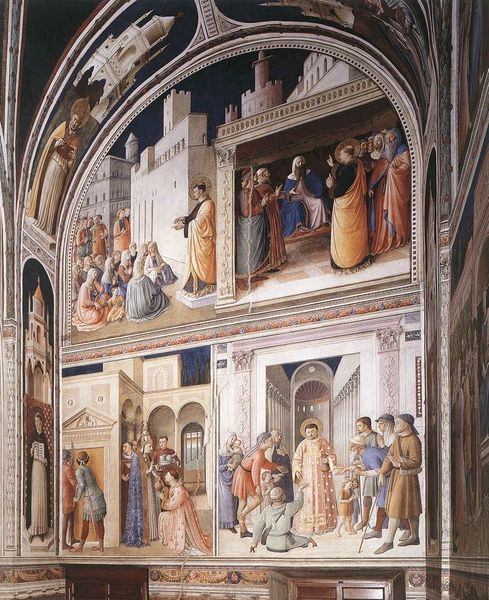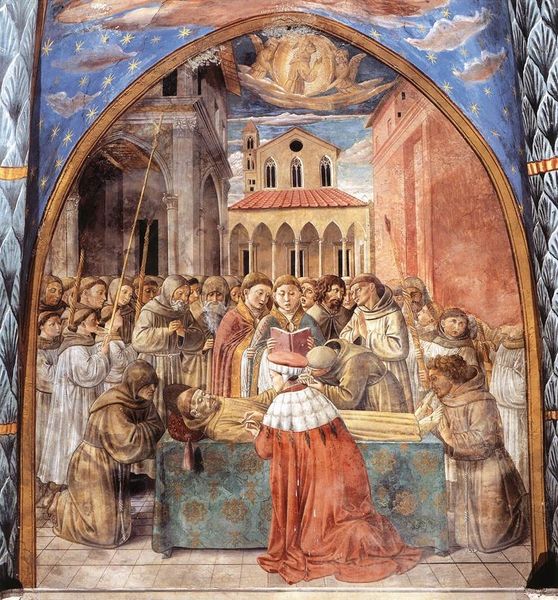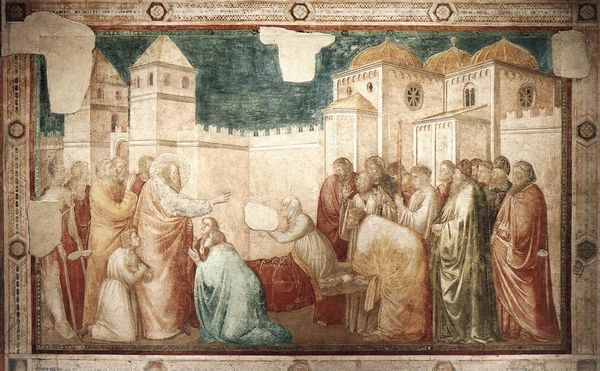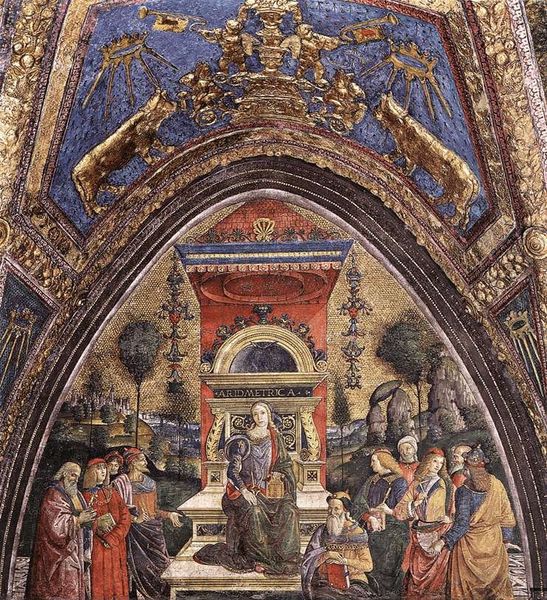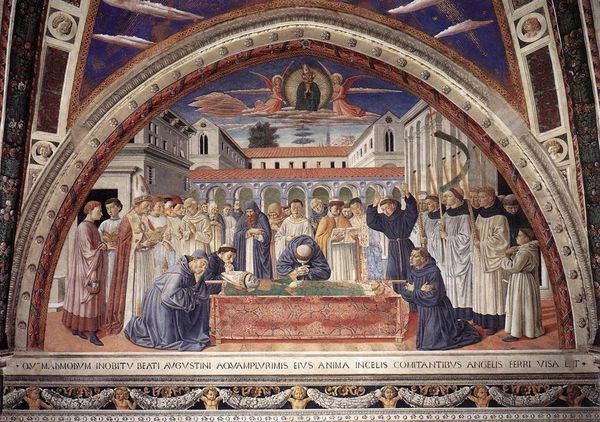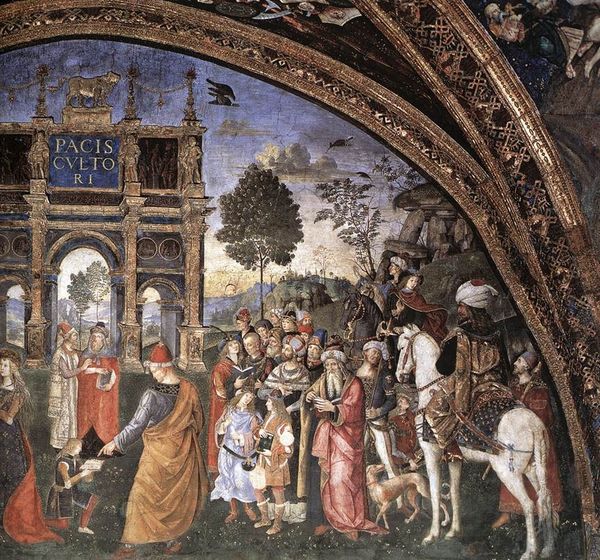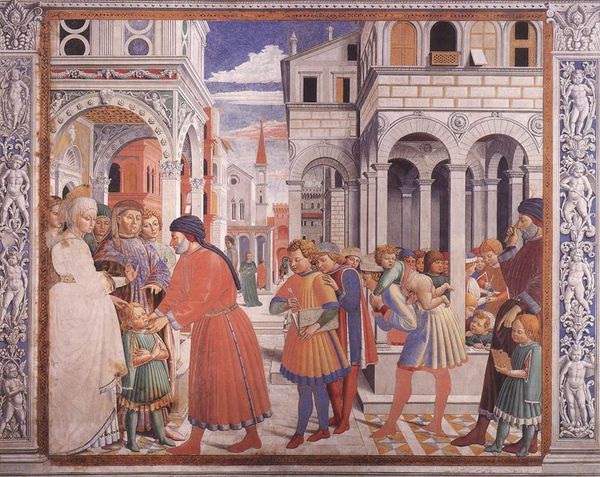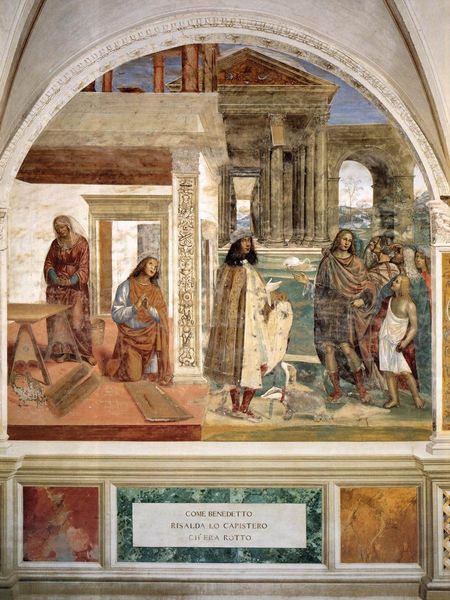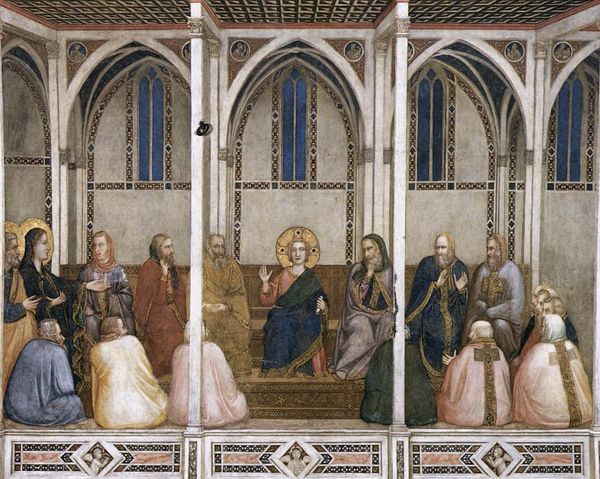
painting, fresco, mural, architecture
#
portrait
#
narrative-art
#
painting
#
sculpture
#
holy-places
#
figuration
#
historic architecture
#
fresco
#
traditional architecture
#
history-painting
#
academic-art
#
italian-renaissance
#
mural
#
architecture
#
historical building
Copyright: Public domain
Curator: Let’s turn our attention to this fresco, "Life of St Benedict, Scene 19: Benedict Sends Away the Harlots," created circa 1508 by Il Sodoma. The immediate sense I get is one of enforced division. Editor: Division certainly strikes the eye. I’m drawn to the clear segregation in the composition itself – a strict separation of the monks on the left and the harlots on the right by architecture, and, shall we say, social expectations. What material practices were employed in its creation? Curator: The fresco technique itself would have involved applying pigments to wet plaster, each layer carefully considered for longevity, considering local materials. The artist is building on layers both materially and, I think, symbolically. Notice the elaborate costumes and the ways they both conceal and reveal aspects of the women's status and labor. Editor: Absolutely. The layering creates a complex symbolism, rooted in monastic values. Light versus shadow, the contained versus the exposed... Notice how the harlots are draped, yet their physicality, their potential for distraction from God, is emphasized? The artist employs very specific iconographic markers to alert viewers to the spiritual peril being averted here. Curator: Right. Their expulsion becomes a spectacle – a performance for the monastic gaze, if you will. The fresco wasn't just about depicting an event; it was about constructing a specific moral framework around labor, piety and the physical world of temptation. How would the fresco creation by Il Sodoma affected his status? Editor: I agree. He is painting a narrative, deeply rooted in cultural beliefs about the role of women. The very act of depicting this scene serves to reinforce social hierarchies. By capturing Benedict's act of rejection, Sodoma paints a powerful statement for its original Renaissance audience. The symbols work together to underscore the monastery's rejection of worldly pleasure in favor of devotion and labor. Curator: By focusing on materials, on process, on the sheer labor it took to construct these frescoes, we begin to understand its power not as some isolated genius, but as a carefully built social act. Editor: Exactly. When examining these murals, uncovering those ingrained, often subtle symbols, allows a deeper appreciation not only of the artist's skill but of the enduring power of visual communication across time.
Comments
No comments
Be the first to comment and join the conversation on the ultimate creative platform.
